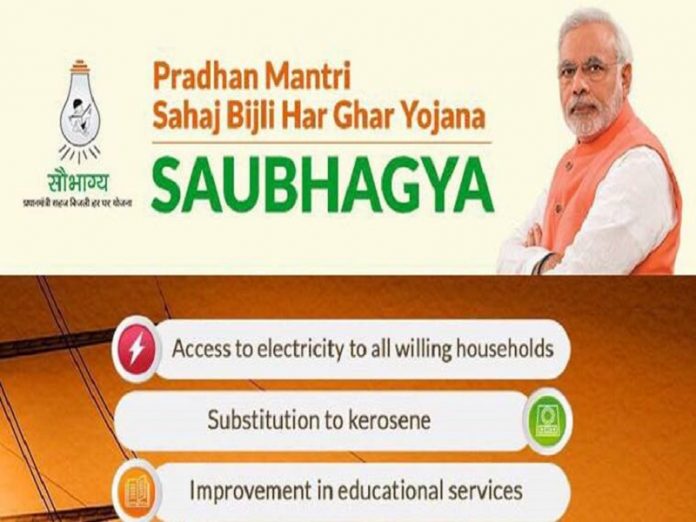Saubhagya- Pradhan Mantri Sahaj Bijli Har Ghar Yojana
Pradhan Mantri Sahaj Bijli Har Ghar Yojana –“Saubhagya” a new scheme was launched by the Prime Minister Shri Narendra Modi to ensure electrification of all willing households in the country in rural as well as urban areas on 25th September, 2017.
OBJECTIVE: The objective of the ‘Saubhagya’ is to provide energy access to all by last mile connectivity and electricity connections to all remaining un-electrified households in rural as well as urban areas to achieve universal household electrification in the country.
| Scheme | Pradhan Mantri Sahaj Bijli Har Ghar Yojana –“Saubhagya” |
| Objective | To provide electrification to all households in the country. |
| Ministry | Ministry of Power |
| Nodal Agency | Rural Electrification Corporation |
| Project Cost | Rs.16320 Crores Rural households : Rs. 14,025 crore Urban households : Rs. 2,295 crore |
| Funded By | Government of India |
| Launched on | September 25, 2017 |
| Launched by | Prime Minister Shri Narendra Modi |
| To be completed by | 31st of December 2018. |
Criteria for allocation of funds to the States:
Projects under the scheme would be sanctioned based on the Detailed Project Reports (DPRs) to be submitted by the States. There is no upfront allocation of fund under the scheme.
Comprises of :
For un-electrified households, which are located in remote and inaccessible areas, the pack comprises of
- The solar power packs of 200 to 300 WP with battery bank
- Five LED lights,
- One DC fan,
- One DC power plug.
- It also includes the Repair and Maintenance (R&M) for 5 years.
Implementation:
- The beneficiaries for free electricity connections shall be identified using Socio Economic and Caste Census (SECC) 2011 data.
- Un-electrified households that are not covered under the SECC data would also be provided electricity connections under the scheme on payment of Rs. 500 which shall be recovered by DISCOMs( Electricity Distribution Companies) in 10 instalments through electricity bill.
Expected outcome :
- Environmental upgradation by substitution of Kerosene for lighting purposes
- Improvement education services
- Better health services
- Enhanced connectivity through radio, television, mobiles, etc.
- Increased economic activities and jobs
- Improved quality of life especially for women
























